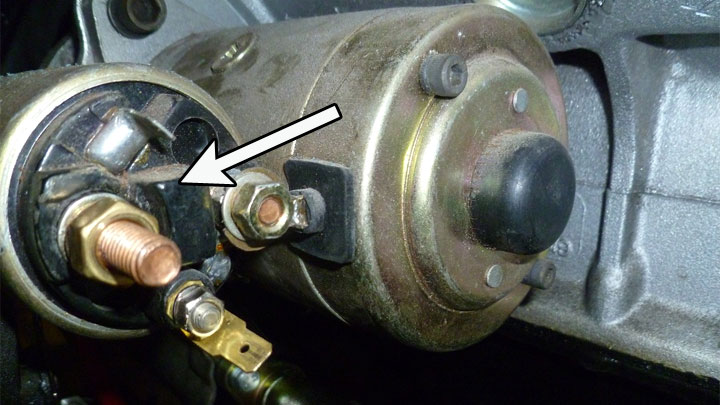How to Troubleshoot Your Starter Spins But Does Not Engage
There are a number of steps you can take to uncover the cause of your starter problem. Following these steps will speed up the diagnostic process and get your vehicle back up and running in record time. Below are a few simple steps that will help you identify the cause of your vehicle’s starter motor problem:
Step 1) Check the battery terminals/cables
Begin the diagnostic process by opening the hood of your car. Check the battery terminals for signs of corrosion or damage. Also, make sure that the connections between the battery terminals and the wires are tight.
Step 2) Test the Battery Voltage
Next, you need to test the voltage of your battery. A battery tester is useful in this situation, but a multimeter can also be used for such a test.
When testing between the positive and negative terminals of your battery, make sure that there is 12.6V. Any reading below this voltage mark is a clear sign that your battery is defective.
Step 3) Verify Battery Cranking Potential
With the help of an assistant, you can now test the battery for voltage drop during the starting process. While your assistant switches the vehicle’s ignition to the “START” position, check the battery voltage in the same way as above.
During the starting process, the voltage of the battery in question should not drop below approximately 10 V. If it falls below this threshold, the affected battery may be in trouble.
Step 4) Check Starter Connections
Assuming your vehicle’s battery tests within specifications, you should check all electrical connections to the vehicle’s starter. Make sure all connections are tight and free of corrosion.
It is also a good idea to check the correct current distribution of the starter motor/starter solenoid using a multimeter. Have an assistant start the ignition of the vehicle and make sure the vehicle’s starter motor and starter solenoid are providing enough power to their respective terminals.
Step 5) Check the power with a bridging test
You can also bypass the vehicle’s starter solenoid to confirm the previous results. This is done by placing a screwdriver blade between the main positive terminal of the starter motor and the field terminal of the starter solenoid. If the starter/starter solenoid is working properly the vehicle’s engine should start, if not then you will need to remove the starter and check it.

